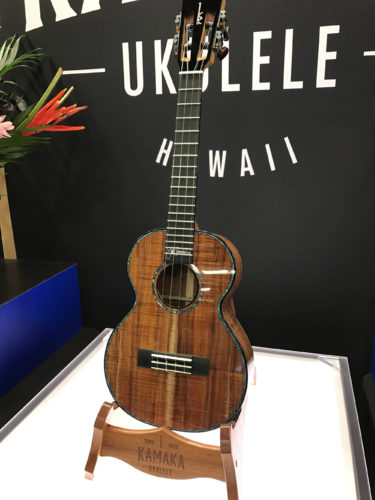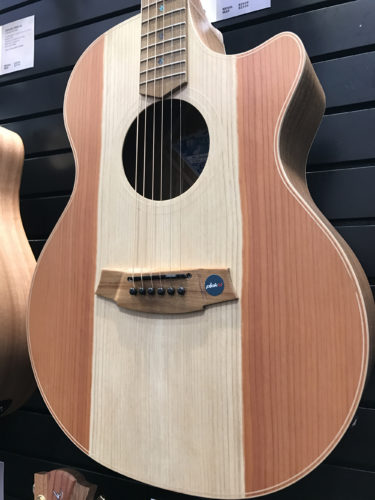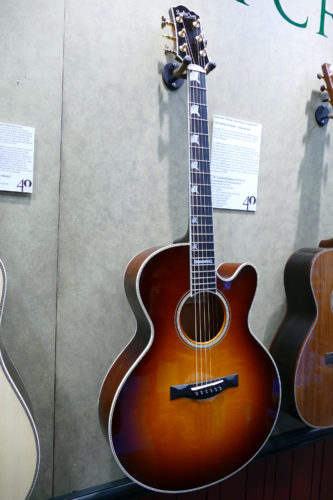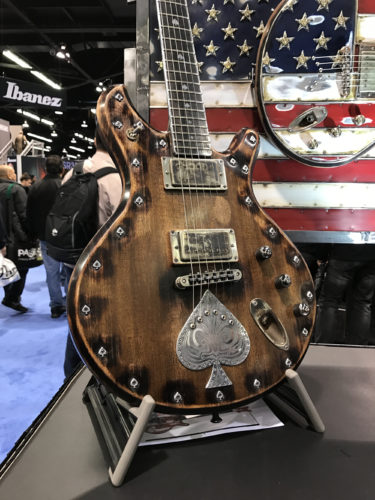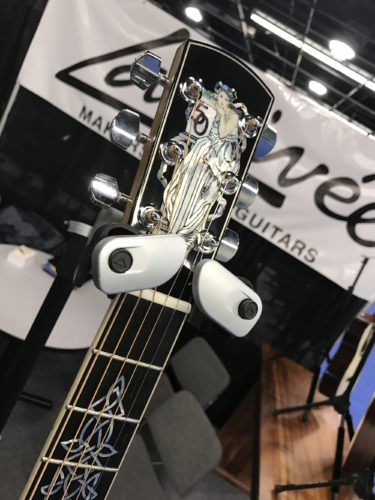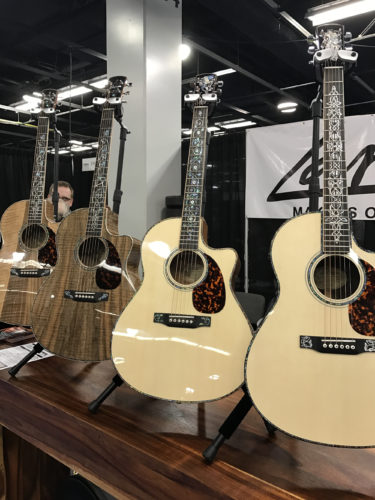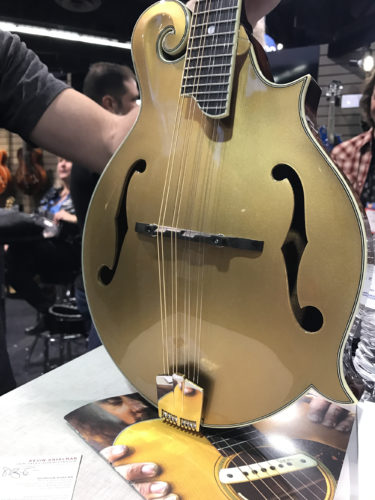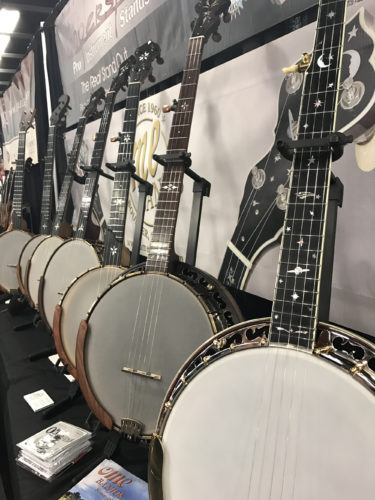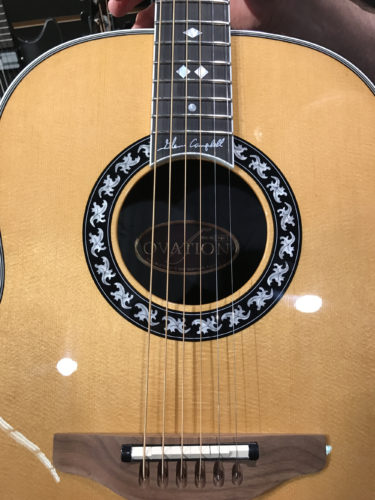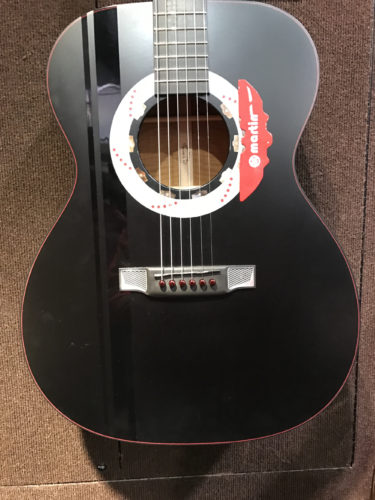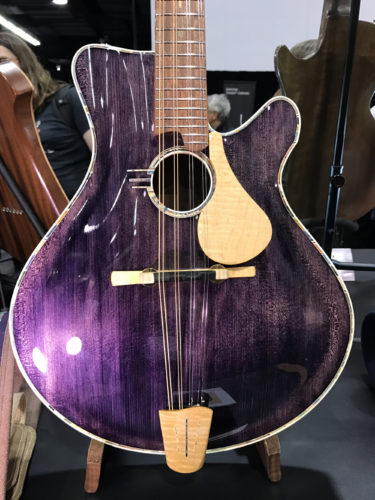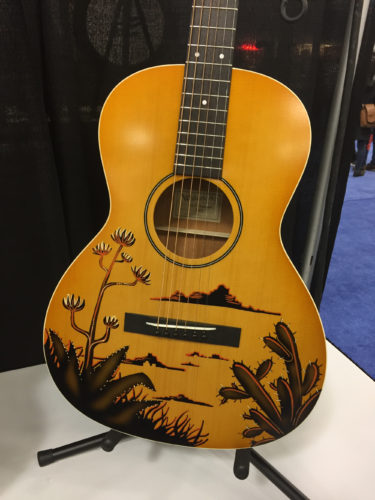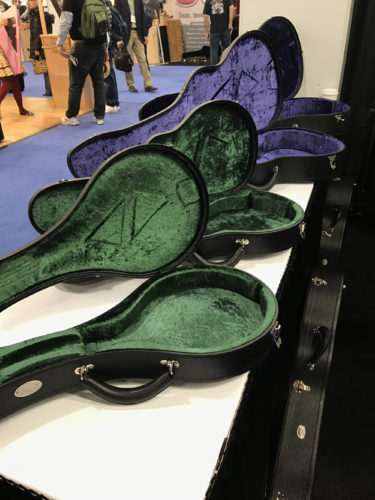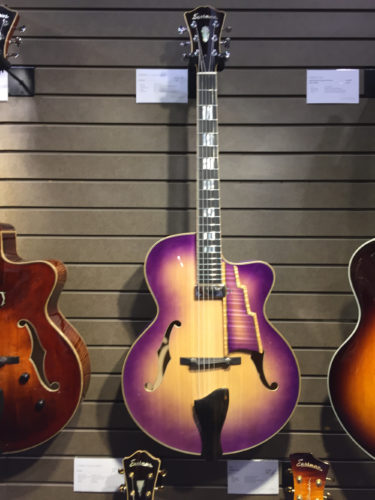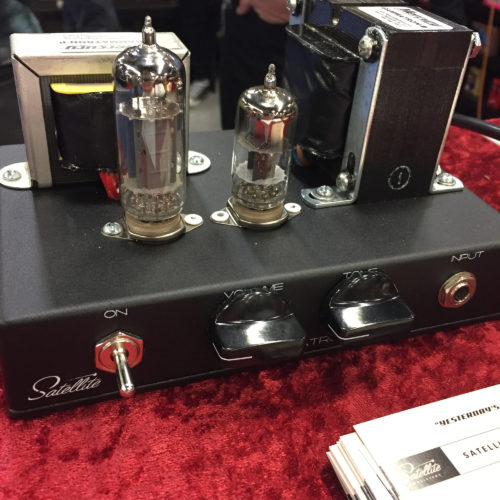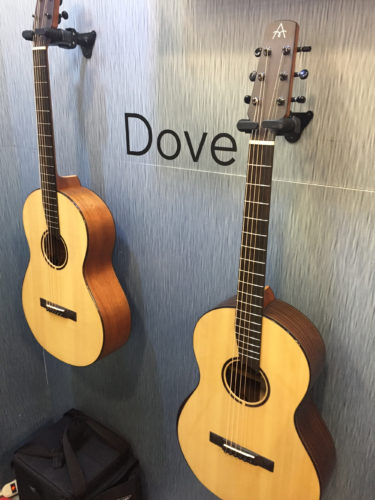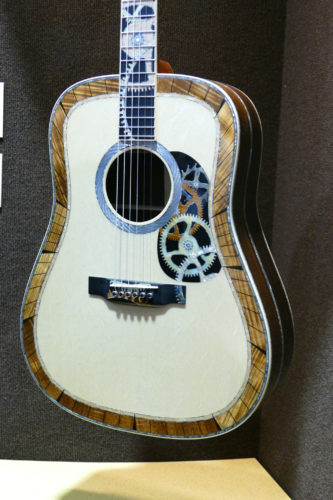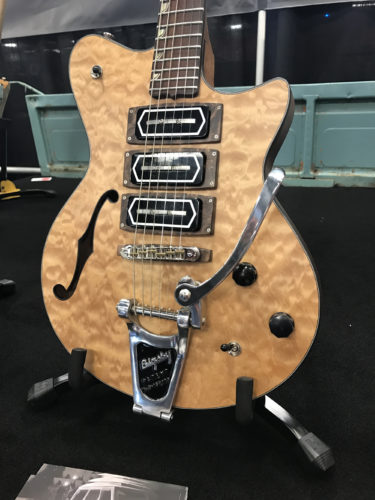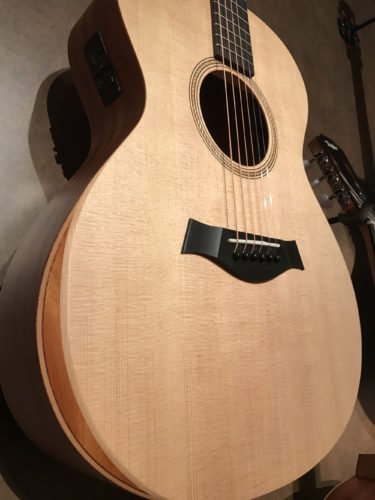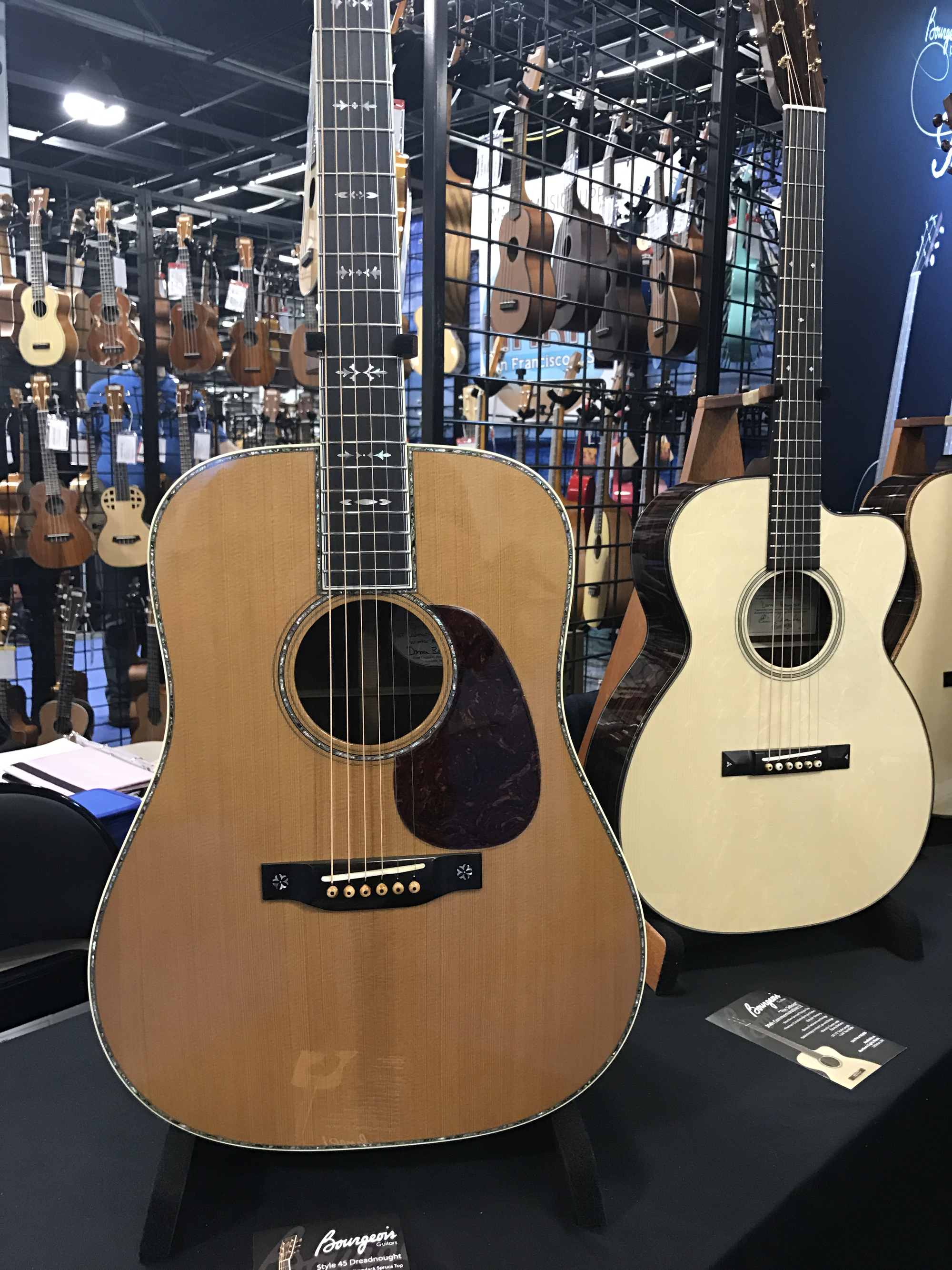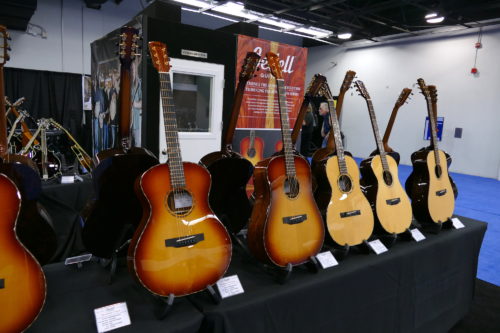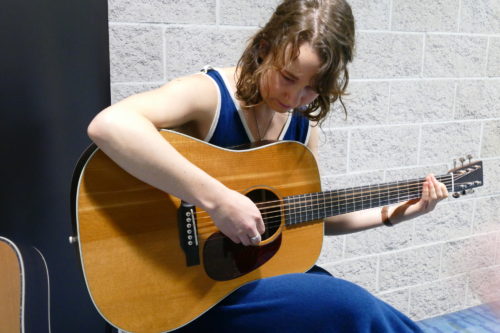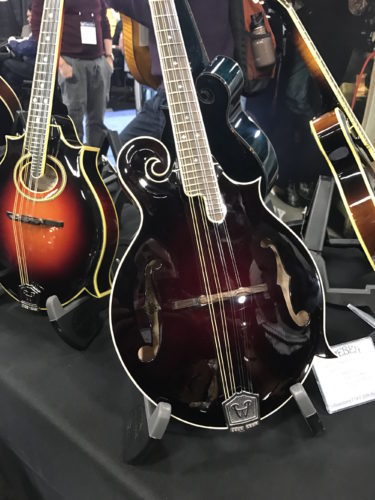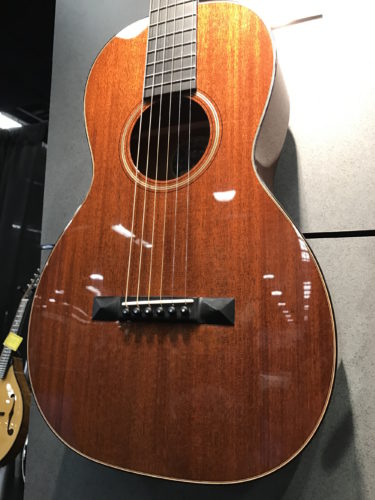Everybody loves their first trip to the NAMM Show. The guitars, the people (and the people watching), the sheer spectacle of an entire giant trade show centered around musical instruments… it’s all so ridiculously great.
Once you’ve had 15 or 20 annual NAMM Shows under your belt? It gets a little complicated. By now you’ve learned to bring earplugs, you’ve made great friends in the industry (and talking to said friends is the real highlight), you’re wearing comfortable shoes, and you know exactly where Orange County’s best Thai restaurants are. But you’ve also heard every pitch imaginable from sales reps, seen a lot of instruments come and go over the years, and realize that, thanks to the constant noise, there’s no way to accurately judge most of the gear you’re seeing for the first time.
Braced for that, we travelled down to soggy Anaheim once again, cameras and notebooks in tow. And while there were few breakthrough products this year, as always, a few things stood out. In no particular order, here goes…
Relics. For years, it felt like the relic craze was slowing down (at least with the Fende-style guitars), but this year it seemed to finally, possibly hit the acoustic market. We saw pre-worn guitars and mandolins in some unlikely places: Eastman, Martin, PRS and Koll. The fact that Martin and Eastman had pre-worn guitars and mandolins on-hand (and the birth of the new Pre-War Guitar company, not present at NAMM) may mean that the acoustic world is finally warming up to the weathered look.
Rosewood/CITES. Perhaps our brains are playing tricks on us but there seemed to be a tad less rosewood (Indian or Brazilian) floating around on the acoustic guitars we spotted at NAMM, along with maybe a bit more maple (and some cocobolo). CITES related? Probably. In fact, we saw many manufacturers large-and-small trying to get updated on the confusing new CITES regulations at both a NAMM-held seminar as well as one that took place at Taylor for their overseas dealers.
The economy. Talking to manufacturers, the general consensus among everyone was that last year was a tough one, even for some of the biggest and most stable brands. I heard stories of layoffs and shortened weeks for workers and more. I know it’s blasphemy to say but there may be simply too many guitars (new and used) floating around for the sheer number of us living guitarists. Despite that, most of the brands we talked to were pretty upbeat for 2017 and a few of the stores we talked to had their best years ever in 2016.
Pedals. They’re everywhere. From the big companies like Boss and Line 6 to the middle-sized guys like Earthquaker Devices and Z.Vex to the truly boutique makers toiling away in their garages, pedals are seemingly one of the few growth areas in our little industry. In fact, there were so many interesting pedals that we’re featuring our favorites in a special NAMM 2017 pedal recap that will be published on this site very soon. Stay tuned…
Collings. Our friends at Collings always have a few surprises at NAMM and their new 360 Baritone was no exception. 27.5″ scale, Mastery hardware and Lollar Alnico P-90s that were tweaked specifically for this guitar make it one of the nicest looking and playing baritone electrics we’ve seen.

On the acoustic side, we were glad to see the Collings Pete Huttlinger OM1 return. The first dozen of these instruments will feature Huttlinger’s signature on the label (leftovers from his first batch); but all of them have neat fly fishing-themed inlays on the fretboard, which we’re sure Pete (an avid fly fisherman) would have loved. A SJ Koa A SB was blinged out and featured koa back and sides, an Adirondack top, tortoise binding and some striking red trim. Another new model, an adorable little parlor guitar, was also on display.
Waterloo Guitars. Across the aisle from their main booth, Collings had a separate, adjoining booth for their Waterloo line, which just keeps expanding. When Waterloos first came out, everyone seemed to think they were a niche line, quirky (but cool) companions to your other, pricier guitars. I’m starting to think otherwise. I’d be perfectly happy with a WL-14 or a WL-K as my only acoustic—they may have a little more character than a D-18 or Taylor, but they’re definitely versatile guitars. This year saw the unveiling of the Waterloo WL-14 Scissortail, their spin on the old Kalamazoo Oriole. This guitar had maple back and sides, spruce top and a blonde finish. There was also a super simple, super light WL-S (a minimalist guitar for those who love old Stellas) and a far more ornate WL-S Deluxe, which had Stella’s trademark purfling. Could a 12-string be next? We’ll have to wait and see… They also used the Waterloo booth to showcase the vintage-style guitar and mandolin hard shell cases that Bill Collings has been trying to perfect over the last several years.
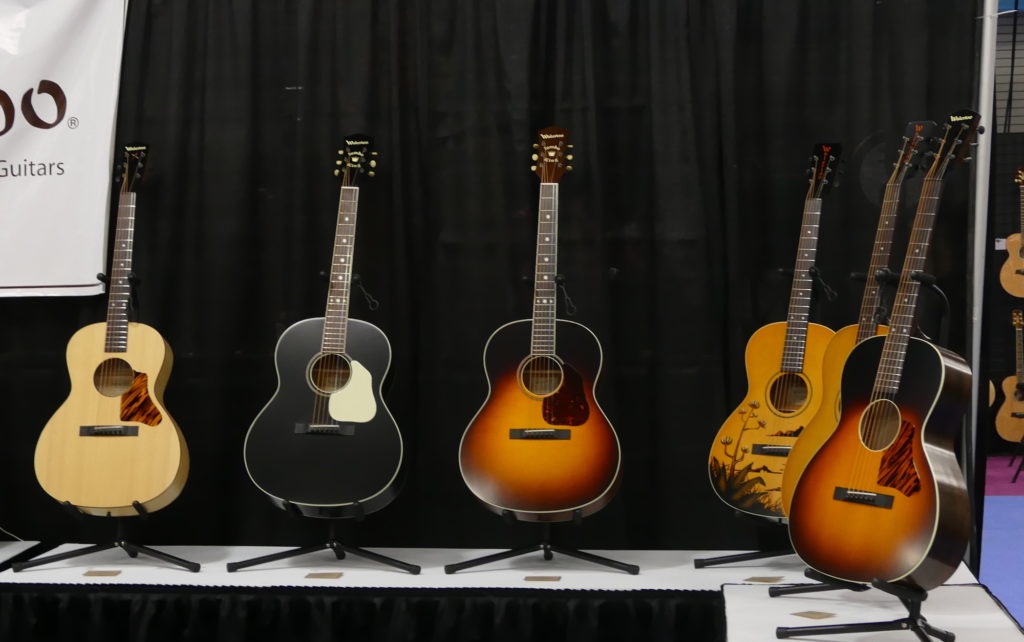
Huss & Dalton. Huss & Dalton’s showstopper was the MJ Custom entitled “Dark Sky” (the guitar on the right in the photo below). Inspired by the many hues of a sunset, it’s somehow both bold and traditional at the same time. Seriously one of the prettiest sunbursts we’ve ever seen.
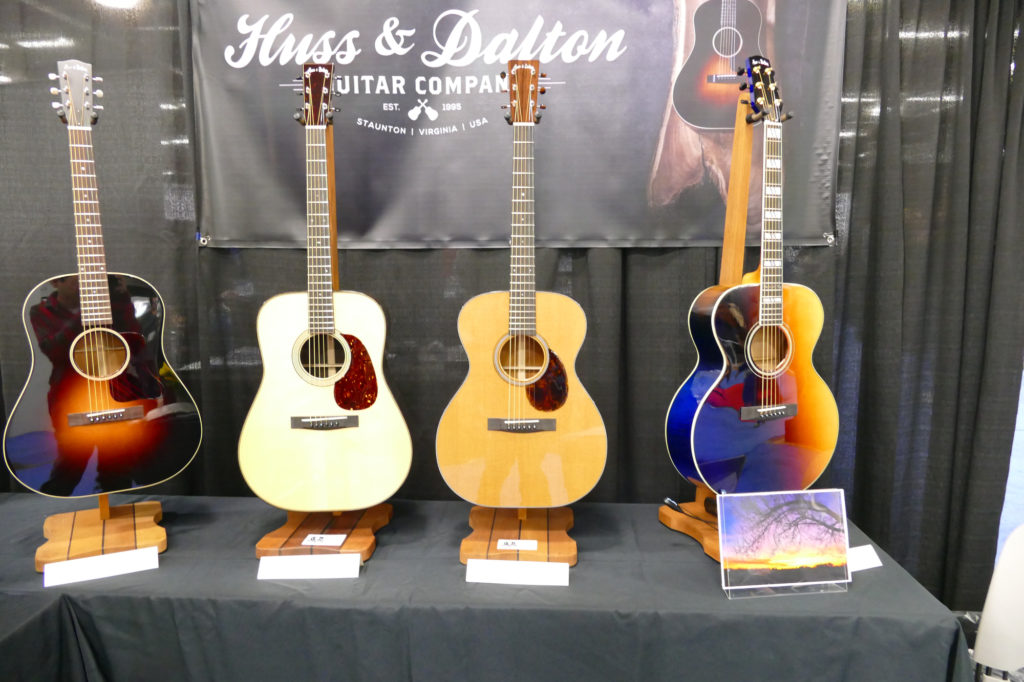
Bourgeois. Dana Bourgeois typically has one or two guitars that stop you in your tracks; this year was no exception. The L-DBO Whyte Rabbit was on display (it also was at our Fretboard Summit last year). It’s an aptly-named, presentation-grade guitar with mother-of-pearl all over the fretboard. Probably not the guitar you’d lug to open mic but it sure was memorable. Also remarkable: a large-soundhole OM with Brazilian and a torrefied Adi top. So nice. And then there was the Schoenberg “The Soloist” 30th Anniversary Commemorative Limited Edition… It’s amazing to think that Eric Schoenberg and Dana pioneered the whole cutaway-on-a-Martin thing 30 years ago, but it’s true. The Soloist features German spruce and cocobolo back and sides.
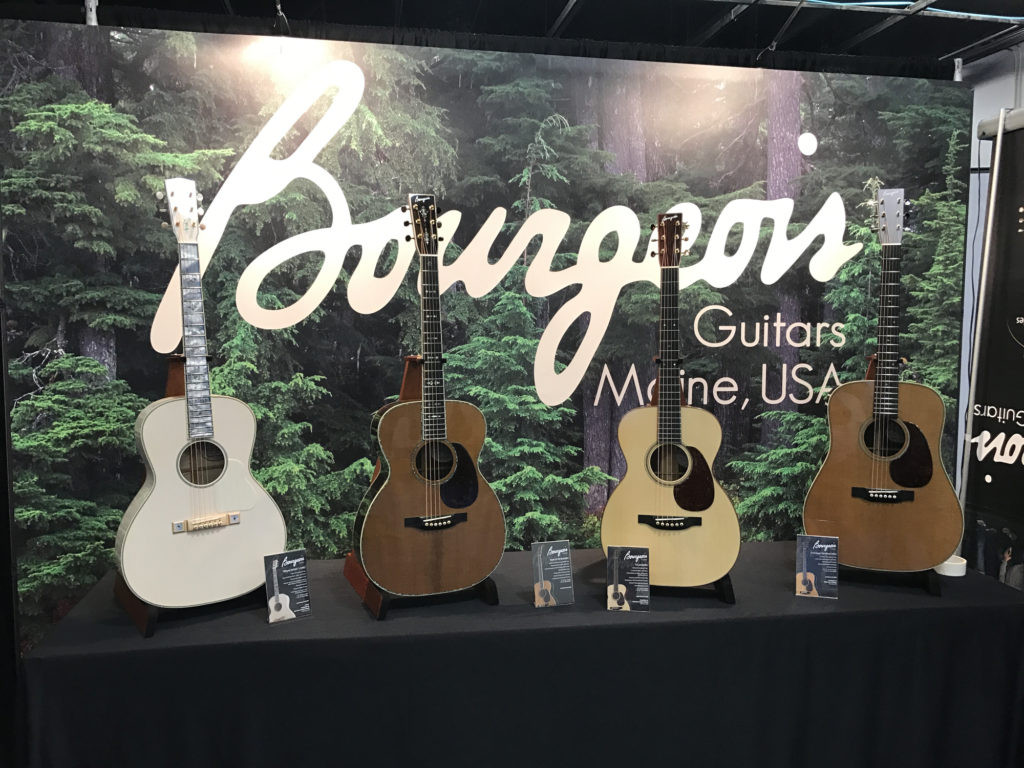
That said, the coolest acoustic guitar we saw all weekend wasn’t on display at Dana’s booth… it was the guitar he built for Courtney Hartman using the top she learned how to voice at our last Summit. Dana found some unsellable (there were knot holes in the back and sides!), but gorgeous Brazilian and crafted a great sounding mutt of a guitar to give to Courtney at NAMM. Too cool… we have video with Courtney playing this instrument coming soon to our site.
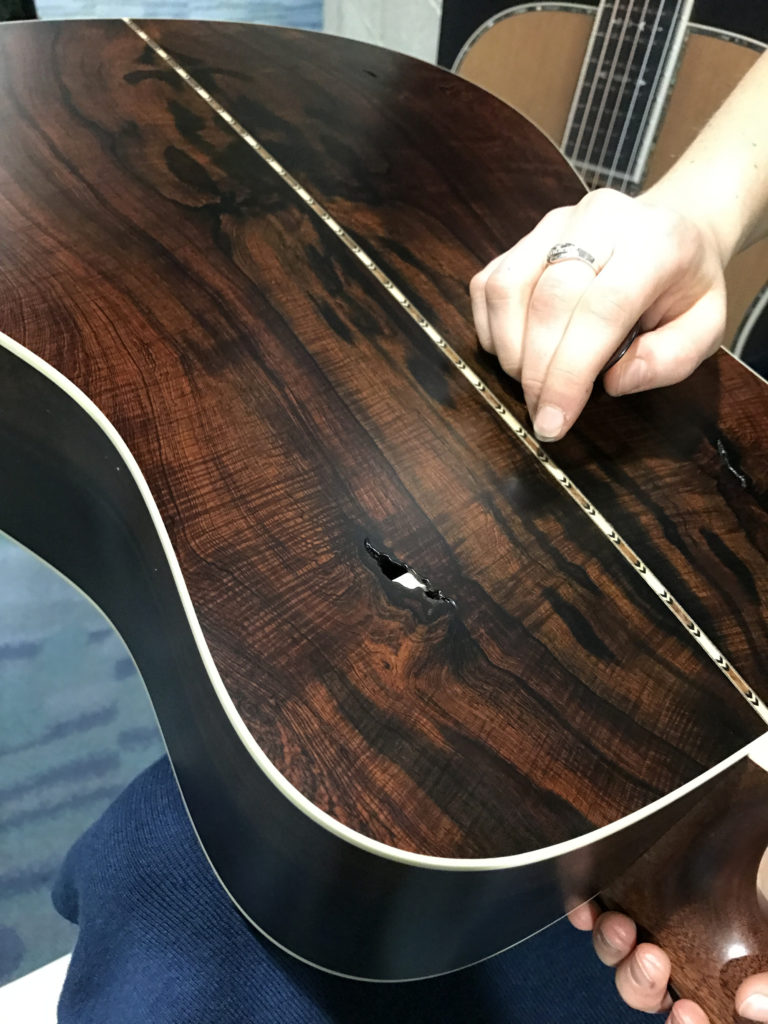
PRS. The PRS booth was crowded, especially on Friday when John Mayer showed up for a press conference. He was there to talk about the J-Mod 100 amplifier, which was designed by Paul Reed Smith, Doug Sewell and Mayer himself. Not cheap at $6000 and no reverb (that’s how Mayer wanted it) but we’re going to guess they’ll have no problem selling a bunch of these.
Sadowsky Guitars. Roger Sadowsky is never one to shy away from innovation. His new spruce core electrics feature lightweight and resonant chambered spruce bodies with exotic woods on the outside. Great looking guitars that won’t break your back.
Deering. For 41 years, Greg and Janet Deering have been building some of the world’s nicest modern banjos. At this year’s NAMM, they had a full spectrum of offerings, from a slightly less fancy version of Mark Johnson’s ornate Clawgrass model (we featured one of the originals in our cover story on Steve Martin in FJ #30), to two new Tony Trischka models (both with 24 fret necks) to a new Vega White oak long neck banjo. Between the Goodtime and their uber-fancy presentation models, Deering continues to be at the forefront of the modern, ever-growing banjo movement.
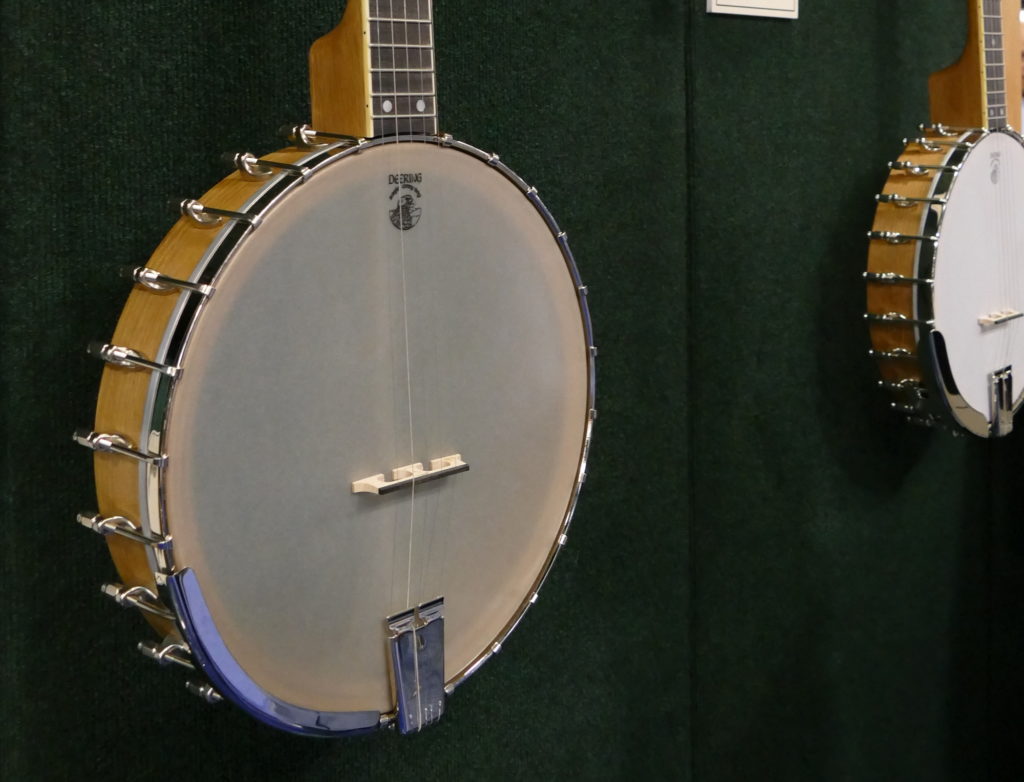
Preston Thompson. One would think it would be harder than ever to launch a new acoustic guitar line. Preston Thompson continues to show that it’s do-able, if you have the skills to back it up. Thompson and his crew from Sisters, Oregon brought out a koa Thompson 0; a 12-fret 000 Sunburst with Adi top and mahogany back and sides; a mahogany size two parlor guitar (will next year be the year of the parlor?); and an Adi/mahogany dreadnought. All solidly in the Martin vein but all wonderful.
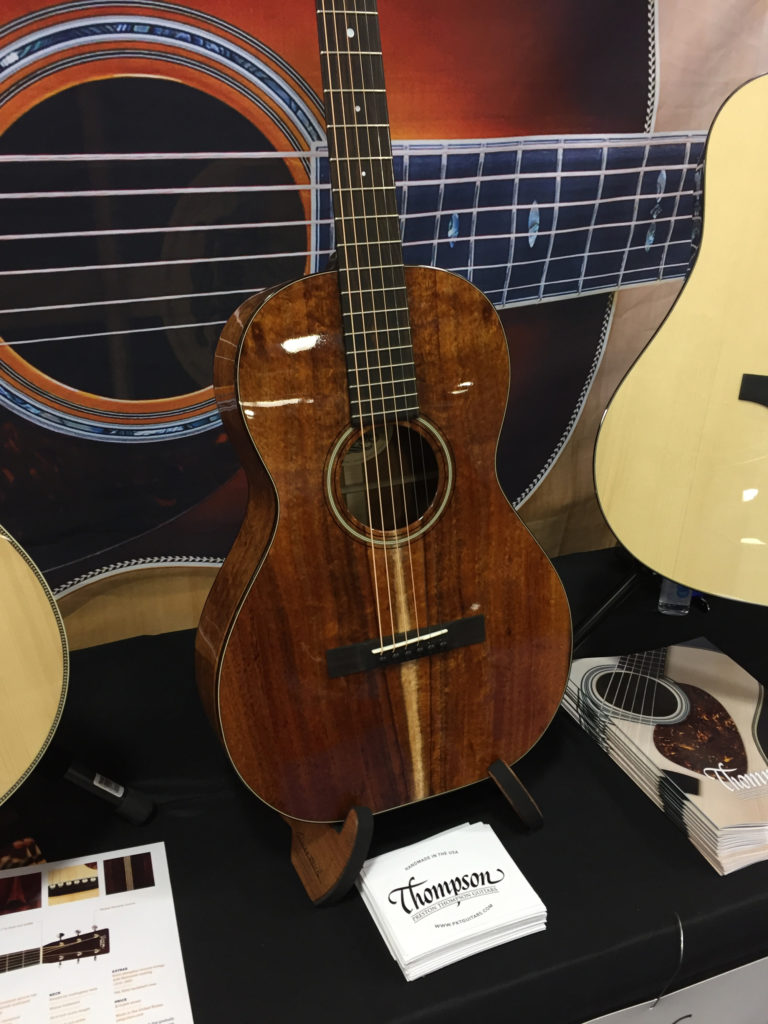
Bedell/Weber. Just down the road from Preston Thompson in Bend, Oregon, is the headquarters for Two Old Hippies, Weber and Bedell guitars. Since their relaunch, Bedell has celebrated local tonewoods as well as the exotics (they own one of the world’s largest legal stashes of Brazilian rosewood). This year they were showcasing cocobolo with their Revolution series of guitars. Bedell had a soundproof booth installed where they were showing how they take sonic measurements of their woods before construction (which lets them fine tune the ideal thickness, bracing and top woods), a process not unlike the one Bryan Galloup outlined at the last Fretboard Summit. It was great to see a major manufacturer bring this level of science to the building game. Meanwhile, Weber celebrated its 20th anniversary this year with some gorgeous commemorative f-style mandolins on display.
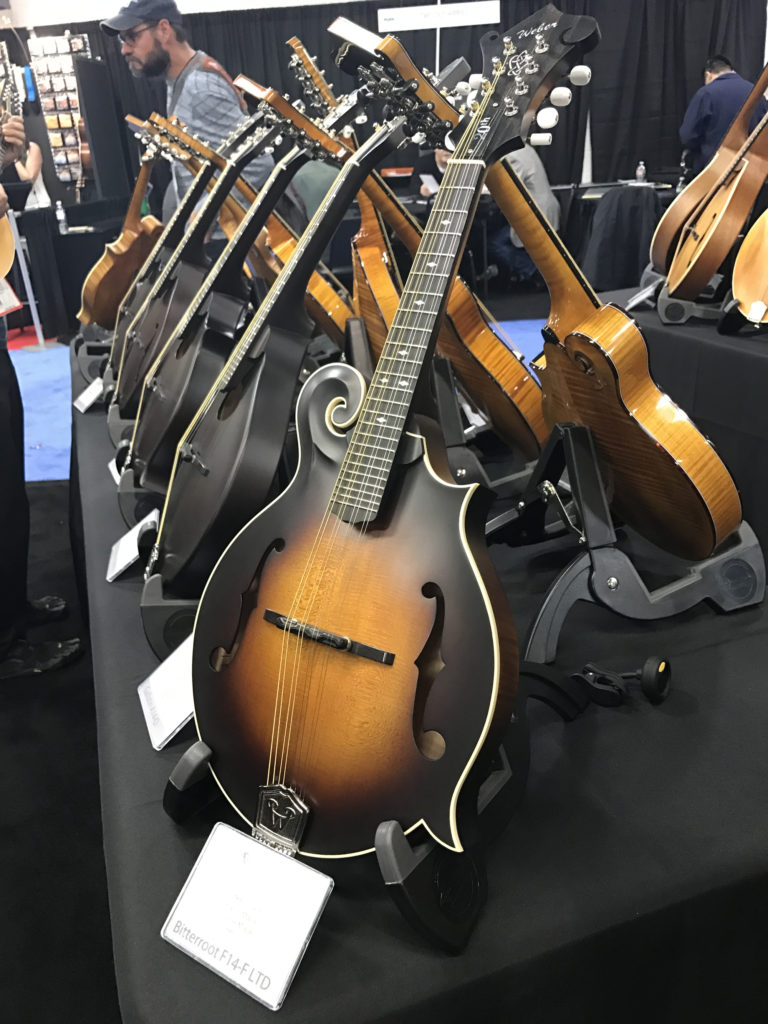
D’Addario. Speaking of mandolins, D’Addario has added mandolin strings to their new and popular Nickel Bronze lineup. There are four gauges: from medium heavy to light.
Santa Cruz Guitar Co. Perhaps because of its open layout, the Santa Cruz booth seems to become a de facto hangout for us Fretboard Journal types and many of our friends. It was great to hear Eric Skye, Mark Goldenberg and Jamie Stillway performing and the SCGC NAMM guitar lineup was stellar, too. Among the highlights: Richard Hoover had a custom Vintage Southerner Model with a German spruce top and koa back and sides, a custom H-13 with a moon spruce top and cocobolo back and sides, and a striking redwood-topped, Brazilian OM with snakewood binding.
Koll. This year’s winner for best booth display has to be Saul Koll, who brought his 1964 VW Single Cab bus all the way down from Portland. His guitars were just as cool. Two guitars that stood out: a lightly relic’d Koll Junior Glide in TV yellow and a 12-string Duo Glide “honey burst” with Curtis Novak gold foils.
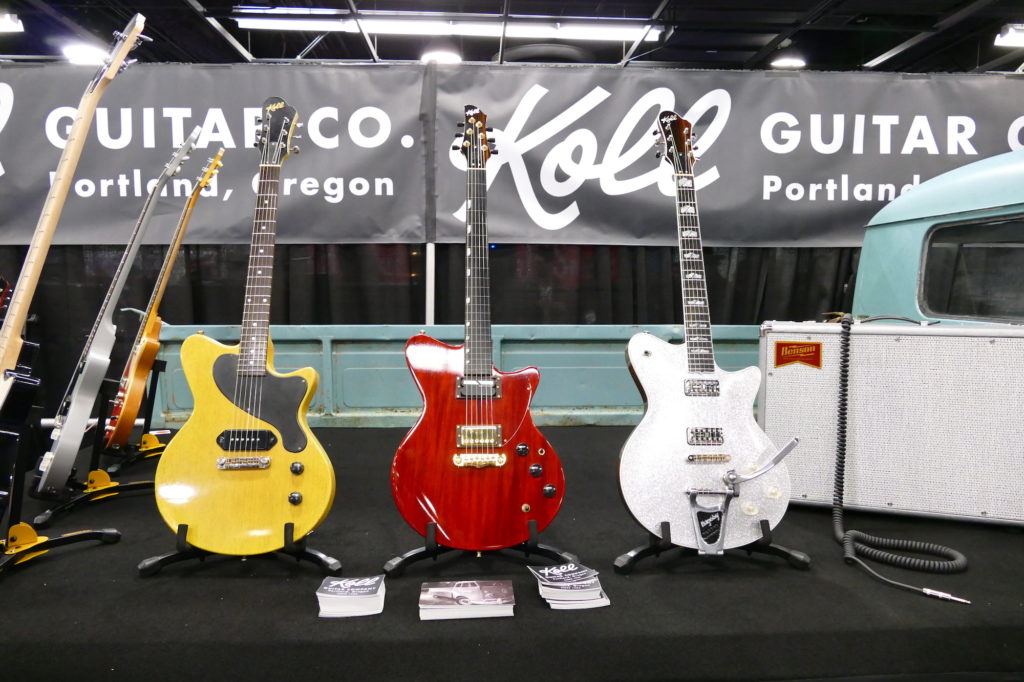
Martin. It was impossible not to notice the blingy two millionth Martin on display. There, against a wall, it spun around, teasing us. This instrument was an unlikely collaboration between Martin and a watch company, Pennsylvania-based RGM Watchmaker. This guitar resulted in no shortage of opinions with its timepiece theme, multiple layers of embedded gears, slightly dangerous metal pickguard (not that anyone was attempting strumming it) and working watch housed in the headstock. The details on this thing are incredible, but it still left some scratching their heads. The two big remarks I overheard: Why didn’t they make it more about the Martin legacy? and Did they really build another million guitars already?

I’m not a watch guy so I won’t declare judgement, but the guitar – and its $150,000 offshoot the D-200 Deluxe – is certainly a statement and the craftsmanship was through the roof. The other big statement at Martin was the D-420, the company’s new pot-themed guitar. It’s no secret that the acoustic guitar universe is both literally and figuratively a tad on the conservative side, so this was bound to ruffle some feathers. Regardless, it’s interesting to see them continue to push the boundaries of what a Martin looks like and attempt to turn new audiences onto our hobby.
Less controversial? Martin is also entering the world of aged finishes with a limited run of 50 aged 1937 D-28 Authentics; the wear on the model we saw looked natural enough and the ultra-thin finish sounds right up our alley. There’s a new 000-30 Authentic that looked and sounded incredible. And the 00-28 is a welcomed addition to Martin’s already robust offerings. Lastly, the D-18 Outlaw-17 is something we’ll be definitely checking out once they start appearing in the real world. It’s basically a D-18 Authentic with a more comfortable, modern neck. For a lot of players who loved the Authentic concept but found them tough to play, this may be just the ticket to guitar happiness. But act fast…they’re only making 100 of them.
Fender. We loved our time with Fender’s Acoustic SFX and Acoustic Pro amps. So were glad to see the line expanding even further with the smaller Acoustic 100 and Acoustic 200 models. This is also the 30th annivesary of the Fender Custom Shop. To celebrate, Fender had eight of the founding Master Builders to design guitars. Included are designs by Michael Stevens, John Page, George Blanda, Fred Stuart, J.W. Black (the guy behind many of the guitars you see in our Bill Frisell videos), Mark Kendrick, Alan Hamel and Gene Baker.
Eastman. Last year, I had a fun talk on our podcast with luthier Otto D’Ambrosio where he hinted at some of his work for Eastman. This year, we got to see it in full effect. An entire wall of custom creations that D’Ambrosio had designed: From a Monteleone-ish art deco archtop to even wilder creations. What stood out the most though was some of Eastman’s Antique Varnish finishes. A blacktop oval mandolin (despite the crummy lighting in this photo) just looked fantastically worn. Aging can be so hit-or-miss… too little and you wonder why anyone even bothered to relic the instrument; too much and it looks ridiculous. Eastman had it right.
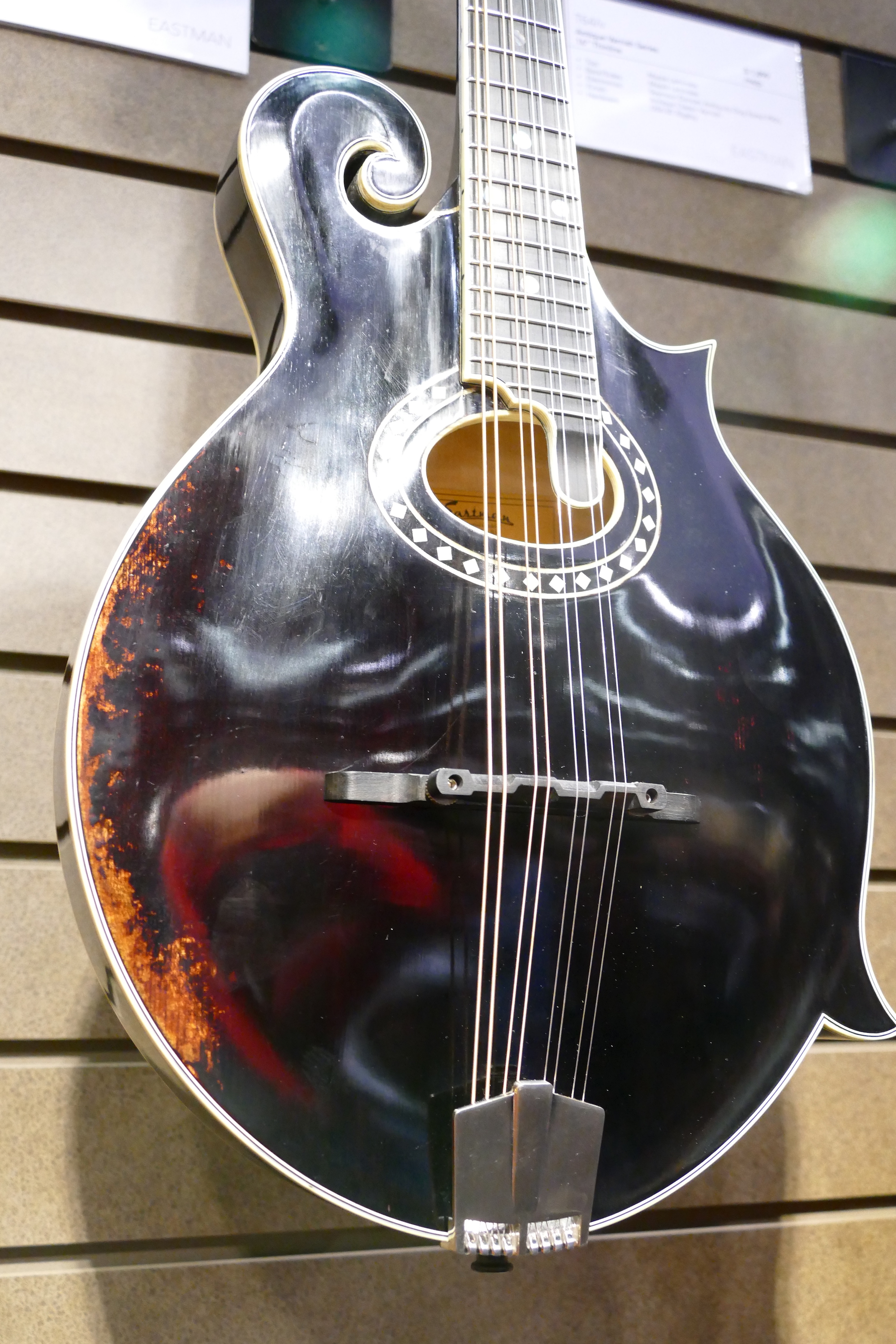
Prisma. We once ran a story on the stash of old growth Rock maple that Sullivan banjos was using for rims. The wood, salvaged from an old factory floor where machines were constantly running, had been used and abused for decades, resulting in an uber-resonant, dry tone wood. Where are we going with this? Well, the guys at Prisma Guitars are basically doing the same sort of thing for electric guitars – they take used 7-ply maple skateboard decks that have been abused in countless ways, sandwich them together, cut out guitar bodies, and then install a neck and top of the line pickups and hardware. Their guitars look fantastic and, at least during the demos I heard, they sounded and played great.
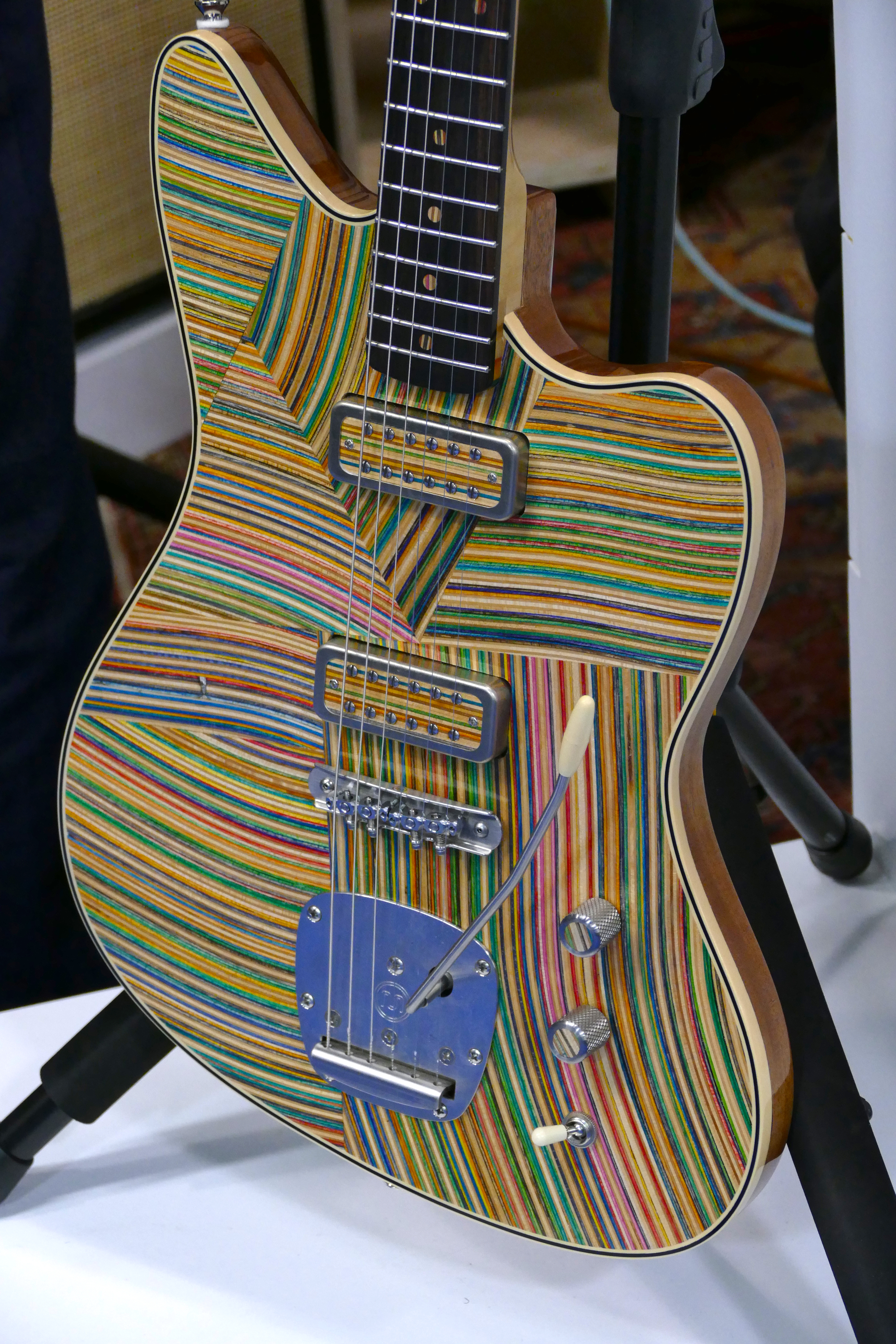
Taylor. More than any other manufacturer I spoke with, Taylor seems to be putting their money where their mouth is when it comes to music education and trying to turn the next generation of players onto the world of guitars. The budget line Academy series includes a dreadnought, a Grand Concert size and a nylon string model. Each model has a spruce top, layered Sapele back and sides, a built-in pre-amp/pickup and tuner and, oddly enough, an armrest/bevel. Taylor’s lead guitar designer Andy Powers, told me that he did everything he could to make a new guitarist as happy and comfortable as possible, wherever it counts. This guitar is as simple as it gets, plain, no-frills (no binding at all, which also makes that bevel easier to pull off) but it delivers all the sound and playability you would want in a first (or backup) guitar. Taylor also unveiled a GS Mini e-Bass, a shortened-scale (23 ½”) acoustic bass on a GS Mini body with special nylon-core D’Addario strings. Though it really needs to be plugged in to be fully appreciated, this instrument was a revelation for this non-bass playing writer. It was versatile and, well… fun! Powers called it the perfect “kids’ guitar” but we’re pretty sure we’d love to add this to our home recording setup, just to mix things up.
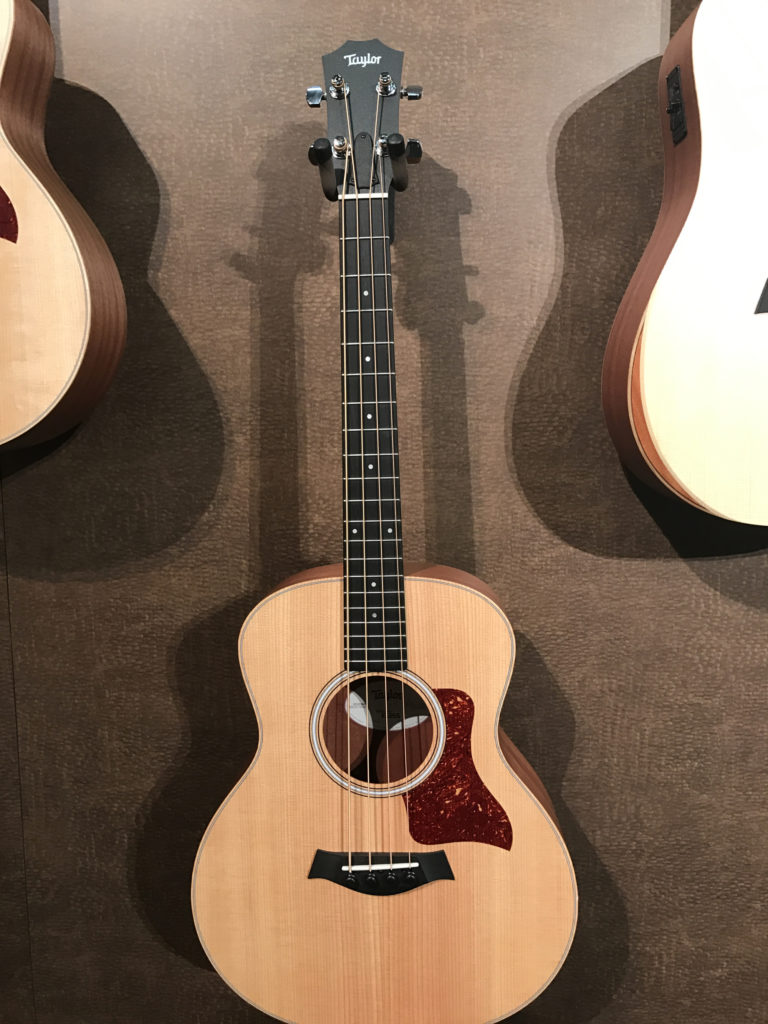
Satellite Amps. Not too far from Taylor, San Diego-based Satellite amplifiers continue to impress. Everything they do is inspired, unique and sounds fantastic. For a while, they’ve been making reproductions of the White Higher Fidelity amp and now they have a White amplifier simulator (basically a solid state White Higher Fidelity amp in stompbox form). Their Niveus is a seven-watt tube amplifier head that also looked incredible. That said, the Satellite offering that stole the show for many of us was their take on the Coronet guitar. Yes, the Epiphone Coronet lives again… and Satellite did an exceptional job with the construction and aged finish. One of the examples even had a pickup from our pal, TK Smith.

Quilter. Pat Quilter is known for his great, lightweight amps. They’re also one of the only solid state amp companies that has earned some respect with tube amp fanatics. With their Microblock 45, they take portability even a step further – this 45 watt amp is the size of a pedal and it costs around $150. Even if you only use it as a backup or headphone amp, it’s a heck of a deal that won’t take up too much space.
Carr. Over the years, we’ve loved our office Carr Sportsman (which is the amp featured on a lot of our Bill Frisell videos), as well as most of the Carr creations we’ve seen. This year they unveiled an updated version of their long-running Mercury amp, the Mercury V. If you want a Marshall tone but also do most of your playing in your house, this may be the amp for you: It features a switchable attenuator (16 watts to near zero), a line out, a three-position boost, reverb and a switch that lets you go from standard parallel circuit to a modded series circuit. Retails for $2530 for the combo.
Kauer Guitars / Titan Guitars. Virtually every maker at NAMM is there to sell to their wares to dealers. Doug Kauer of Kauer Guitars had a booth just to show off his goods, as he only sells direct to customers. (Despite that, we’re pretty sure he picked up some orders from attendees.) Kauer’s electrics will appeal to anyone who loves vintage Fenders and Gibsons offsets but wants a twist – his shapes are classic but just different enough – and the build quality and playability is amazing. He’s also a guy who isn’t afraid to pivot a bit: He’s released a new, budget line called Titan Guitars. For $1299, you get a stripped-down, made-in-California guitar with Seymour Duncan pickups and a bunch of mod options (thanks to swappable pickguards, it’s super easy). Kauer is also the guy behind DRS Racks, which not only look great but are also stackable. A true renaissance guy.
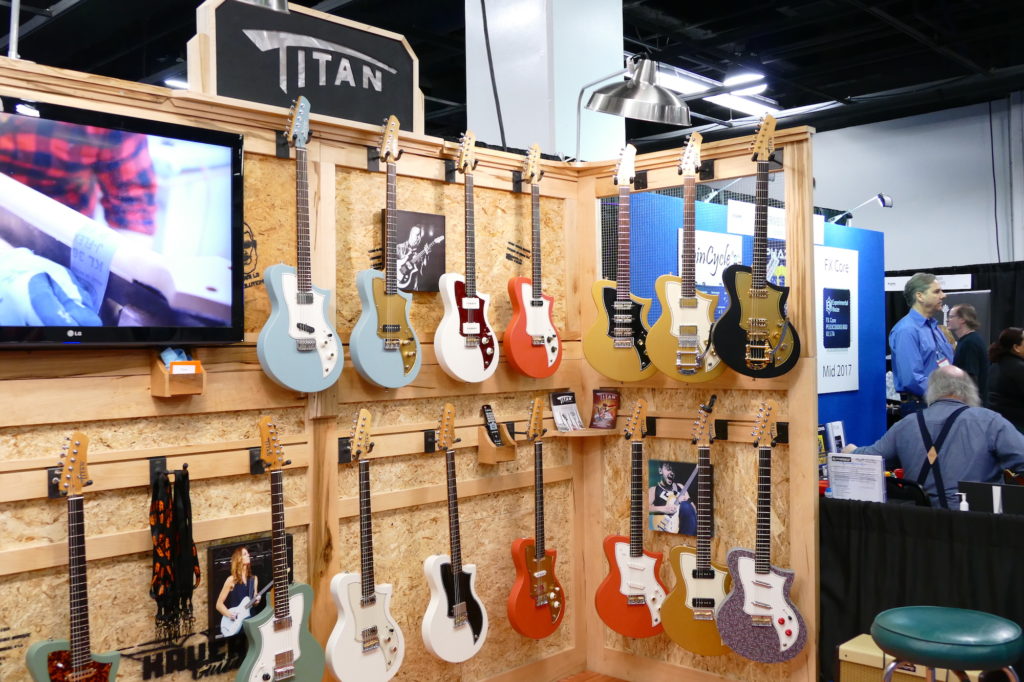
Boutique Builders. The boutique guitar showcase on the main floor of the hall allowed a select group of independent makers to buy a space and showcase their wares, right next to the big guys. It’s an unusual but cool move for NAMM – which is mostly for dealers to buy their 2017 instruments – as few of these builders even sell through a store. I have no idea who at NAMM curated the boutique lineup and offered the invites (or if it was curated at all), but the lineup was fantastic. There were FJ favorites such as Jason Kostal, Steve Klein, Michi Matsuda and Jersey Girl guitars along with makers who weren’t on our radar like Tao and Sauvage (which was boasting a $75,000 guitar made from a single plank of wood… you even get to keep the cropped out trim). The aisle was for the most part packed and every luthier seemed to have quite a following. Mostly, it was great to see all the details on this uber-high-end instruments up close… creations like those of McSwain Guitars aren’t often found at the typical lutherie shows but they sure were stunning. At virtually every guitar show I attend, there are a few tables that just don’t speak to me… here, everyone was doing something unique and interesting, no matter their style.
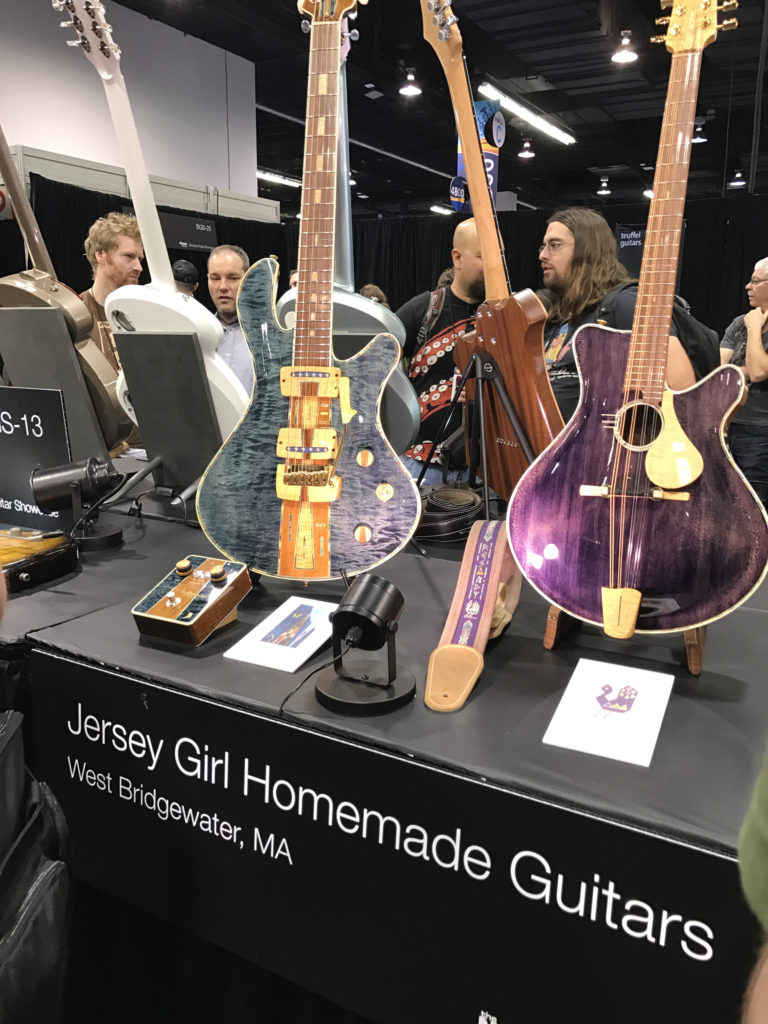
Conclusion. This may have been a year of refinements over giant product launches, but there was a lot to love at this year’s NAMM. The guitar I saw that will most likely come home to me in the near-term? As weird as it sounds, it may be that Taylor GS Mini-e Bass. I’m not a bass guy… at all. And I’m sure bass aficionados can think of countless bargain basses that may deliver better value. But holding that GS Mini bass, trying a few note runs was just… fun. It reminded me of the first time I picked up a ukulele. It is just small enough, just easy enough to play and just innocuous enough that I think it may be joining my little stable soon.
[Top photo: Mason Stoops trying out the Koll 12-string on the NAMM floor. Photo: Scott Krashan]
